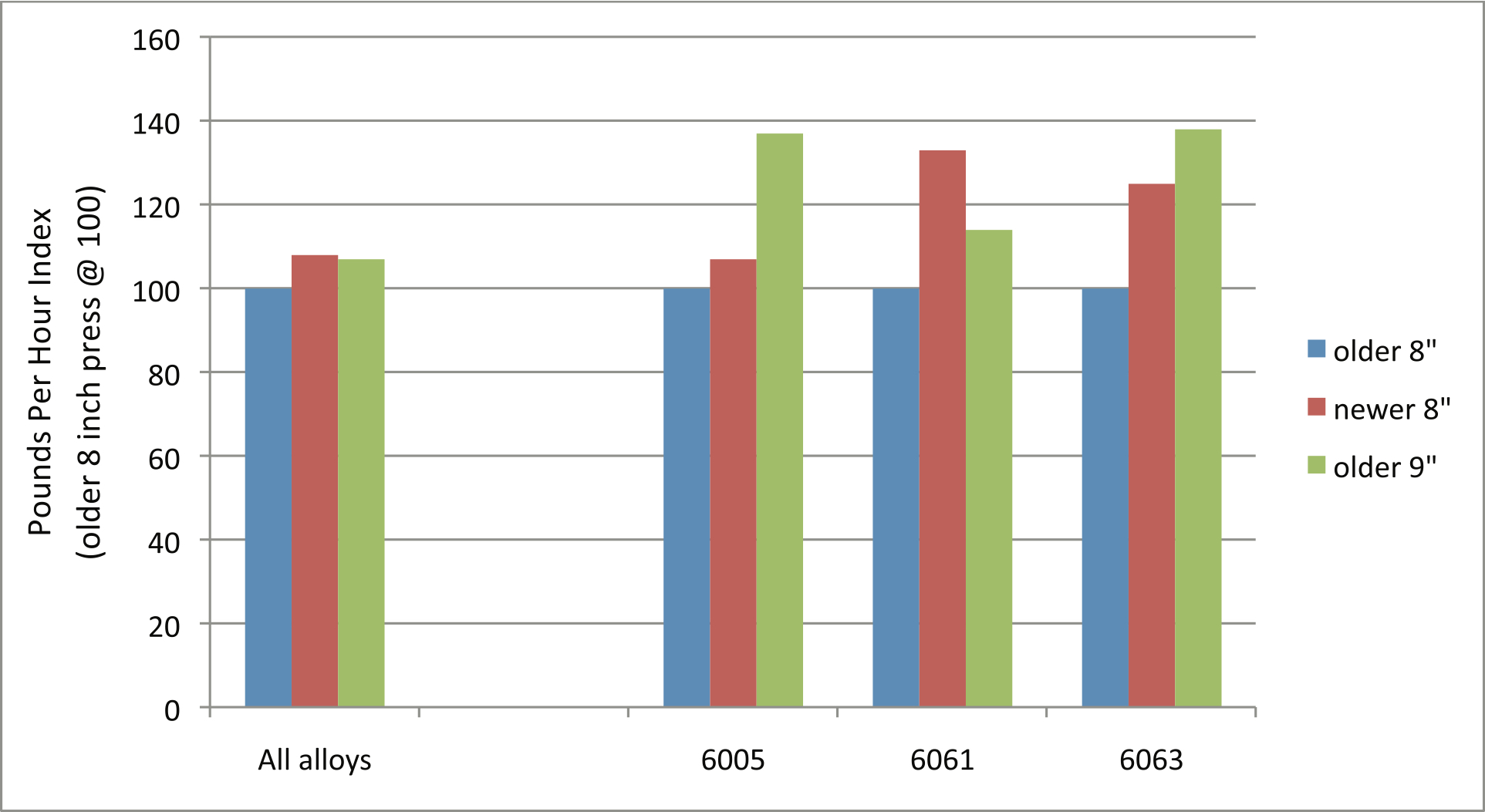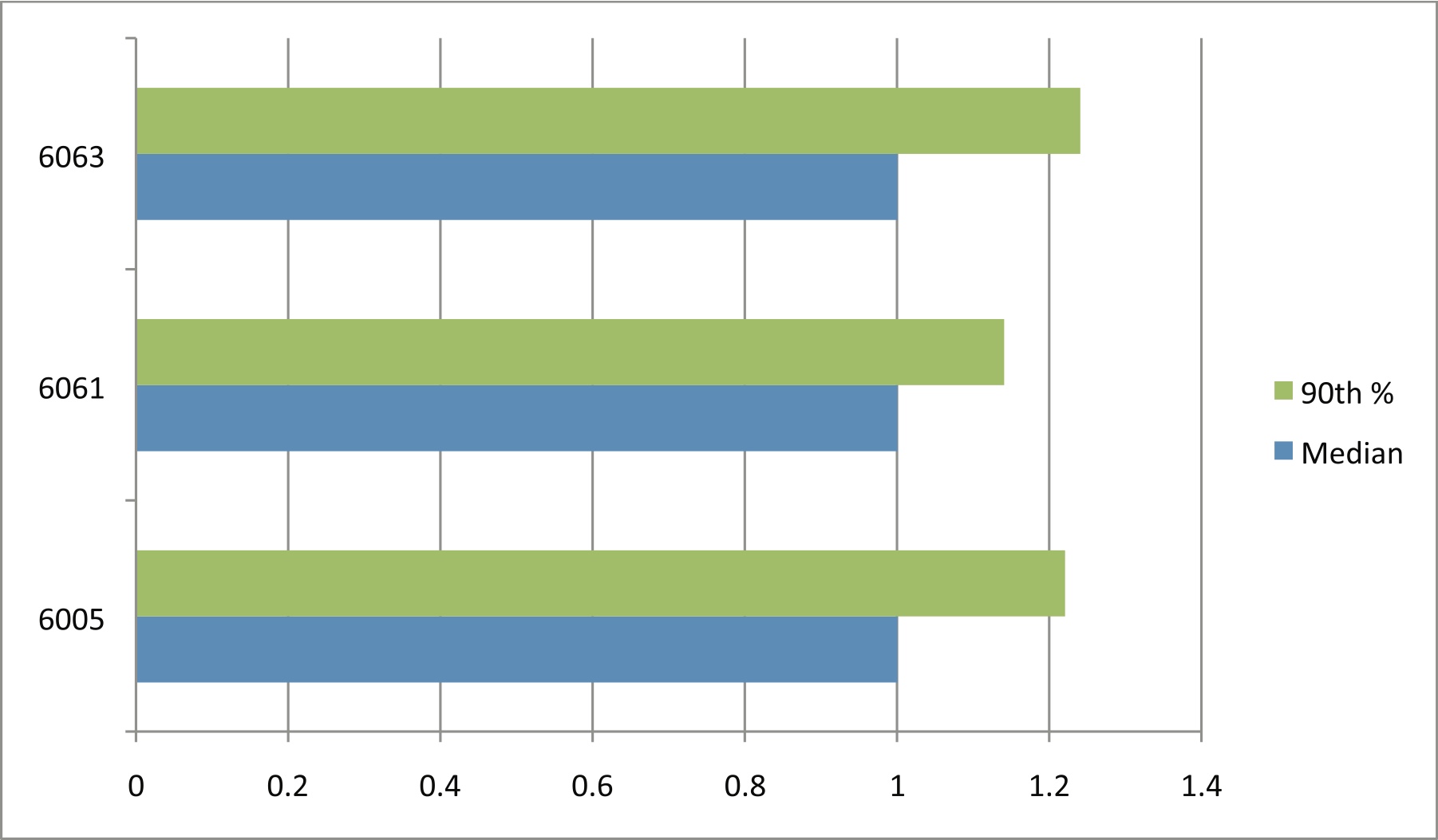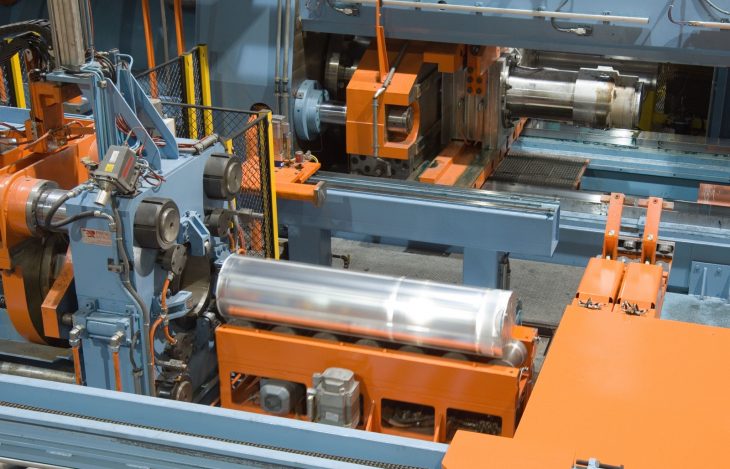For a number of years, the Aluminum Extruders Council (AEC) has conducted the annual Key Indicator Survey, which provided information on the press performance (pounds per press hour, scrap percentage, etc.) of participating AEC members. In early 2017, the AEC initiated a new survey program, the Press Productivity Survey, which replaces the prior version and provides a number of benefits. For the first time, participation in the new press survey has been opened to not only AEC member extruders, but to non-members as well. This enables the Press Productivity Survey to achieve a wider range of data, enhancing its functionality as a benchmarking tool.
Expanded Productivity Data
The new survey sharpens its focus on press productivity and collects significant additional information regarding alloy, press size, press age, etc. Commenting on the switch from the old survey model to the Press Productivity Survey, Andy Curland, president of Vitex Extrusions and chairman of AEC’s Survey Committee, which created the new program, noted, “The Key Indicator Survey lacked sufficient granularity to be really useful in today’s environment. For example, it reported pounds per hour for only five press size groupings: 6 inches to less than 7 inches, 7 to less than 8, 8 to less than 10, 10 to less than 12, and 12 or greater. The new survey collects data for 11 press size groupings: less than 6 inches, greater than 14 inches, and every 1 inch increment in between.”
The new Press Productivity Survey also collects and reports information for four different 6xxx alloys—6005, 6061, 6063, and 6082—compared to the old survey, which had no alloy differentiation. In addition, the new survey differentiates between “newer” presses (those put in service after January 2006) and “older” presses, which the old survey did not.
“The result,” said Curland, “is that extruders now have relevant detailed data that they can compare to their own press and alloy mix.” For example, a typical 9 inch press running 6063 is over 30% more productive (on a net pounds per press hour basis) than an 8 inch press running the same alloy (Figure 1); and 32% more productive when running 6005. Previously 8 inch and 9 inch press data was combined, and there was no data on productivity with different alloys.

Similarly, a newer 8 inch press running 6061 is 33% more productive than an older press; and 25% more productive than the older press when running 6063. Note that in addition to typical (or median) performance values, the survey reports performance at the 25th, 75th, and 90th percentile, allowing even more precise comparisons. An extruder with a newer 8 inch press may find it more useful to compare their 6063 productivity to the 90th percentile than the median; survey results show the 90th percentile as 24% more productive than the median for that alloy.
“It’s not enough just to know where you stand relative to peers on productivity,” Curland noted. “We also wanted to provide survey participants some insights into the ‘why’ behind the numbers.” So the new survey collects and reports data on ram speed (Figure 2), scrap, and die changes. Ram speed is reported by press size, by alloy, and by press age (newer vs. older), again with data for both median and 90th percentile extruders. Scrap and die change data is currently only reported by press size, for median and various percentiles.

“We have been extremely pleased with the initial results generated by the new Press Productivity Survey,” stated Jeff Henderson, AEC president. “Now we want to make it even better; that means more participants and more data.” With that in mind, the AEC will make survey participation available to non-member extruders for the first time. “We want to give non-members the opportunity, on a one-time basis, to benchmark their performance. There is a modest fee for non-members to participate, as well as the commitment to provide their performance data. Anyone considering this can be assured of confidentiality as data collection and analysis is performed for the AEC by a third-party research firm. We think this is a tremendous opportunity for extruders to assess their competitiveness—and to see the value that the AEC can bring.”
Editor’s Note: The 2018 Press Productivity Survey, based on 2017 performance, will be launched in January. Extruders potentially interested in participating should contact Lisse Jurcenko (ljurcenko@tso.net), AEC survey coordinator, for details.
This article first appeared in the October 2017 issue of Light Metal Age. To read more articles from this issue, please subscribe.

